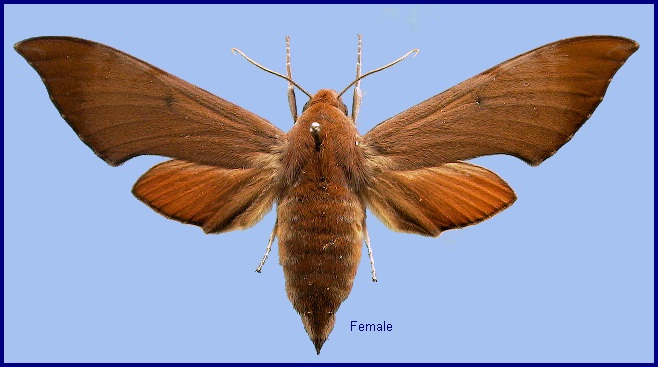
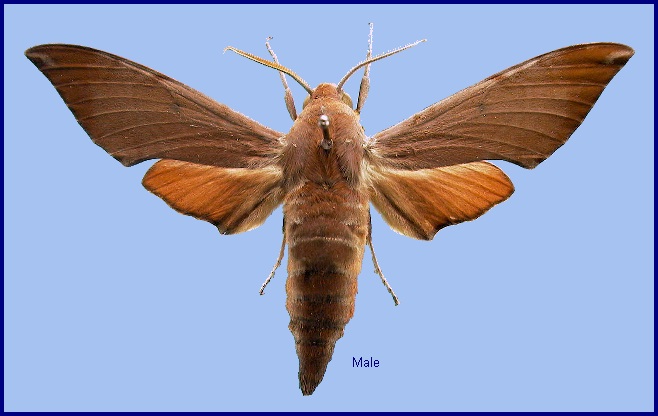
Theretra fukienensis Meng, 1986, Entomotaxon 8: 268. Type locality: China, Fujian, Shaowu.
Note. The male genitalia are very variable in this species, so much so that Haxaire, Melichar & Manjunatha (2021) state that it was impossible to match these morphological variations with any consistent biogeographic hypothesis. The variation seemed to be independent of geography, both within and among populations. However, DNA barcodes showed a large divergence (5%) between the populations of China and Taiwan, and those from Pakistan, India, Nepal, Bhutan and Myanmar/Burma, more than enough to consider them separate species. Thus, even though Haxaire, Melichar & Manjunatha (2021) failed to find any significant and consistent differences in the habitus of these two groups, or in their genital armature, they considered that the two very distinct populations were sufficiently isolated at the DNA level to represent two valid subspecies (not species), namely subsp. rubiginosa Moore, 1888 and subsp. fukienensis Meng, 1986.
Wingspan: 75--86mm. Forewing upperside almost uniformly brown, but with a greyish-blue bloom darkening towards apex; with a small dark discal spot. Hindwing upperside almost uniform orange with a narrow dark brown fringe and blackish-grey basal and tornal area.
In most male genitalia the gnathos is nearly as long as uncus. Valve ovate. Harpe long, tapering from one third of length, spatulate at end. Phallus with a long evenly curved anteriorly dentate at end process at right side and a short dentate lobe on left side. However, there is a great deal of variation in these (Haxaire, Melichar & Manjunatha, 2021).
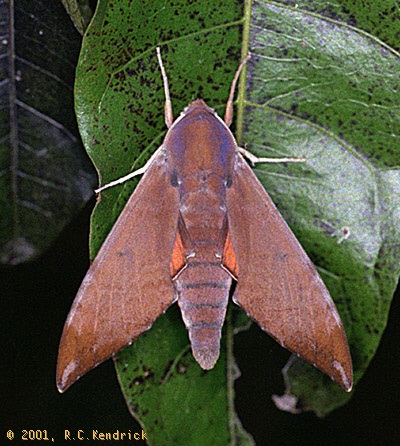
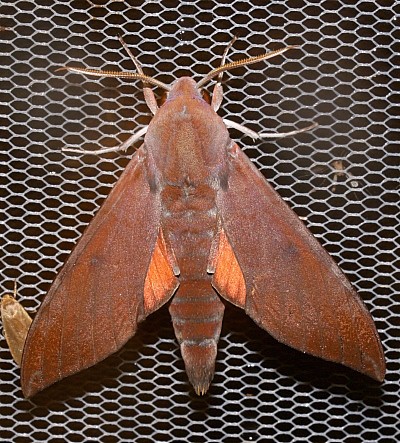
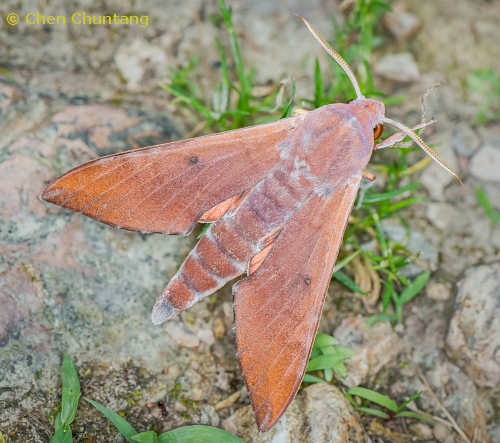
In the Indian subspecies the moth rests with the body parallel with the surface, the wings held slightly below the horizontal. When disturbed the moth presses its head against the surface and raises the body at an angle to it (Bell & Scott, 1937).
A species of tall scrub and secondary woodland in northern Hong Kong (Roger Kendrick, pers. comm. 2003).
China: i-iv (Guangdong; Guangxi; Fujian); 17.iii-10.iv (Hong Kong); iv (Guizhou; Yunnan; Anhui; Zhejiang; Jiangxi); 1-6.v (Fujian); 18.v (Zhejiang); 20.v (Guangdong); 30.v (Hong Kong); vi-vii (Guangxi; Anhui; Jiangxi). Taiwan: 2.v (Taipei Hsien); 6.v.2013 (Yilan Hsien).
OVUM: Pale green, slightly oval (1.2 x 1.4mm), shiny and smooth.
LARVA: Full-fed 80mm; width 10mm. According to Bell & Scot (1937), in subsp. rubiginosa the final instar head is small and round, clypeus about one-half length of head, mandibles very large. Surface of head and body smooth; with no tubercles except on horn. Body tapering frontad from segment 5; rest of body cylindrical. Horn short, slightly down-curved.
In the green form, head green with a pale yellow stripe separating face from cheek; a yellow subdorsal stripe runs from vertex to nape, with a pale double dorsal stripe from vertex to the apex of clypeus. Body green, closely dotted with white above the dorso-lateral stripe, and with yellow below it. This dorso-lateral stripe is yellowish on segments 2 to 4, white and broader on 5 to 12. Horn green, with black tubercles on upper surface. True legs, prolegs and claspers green.
There is also a dark form of the larva in which the head is greyish-black, with the dorsal stripe and a broad band above the mandibles green. The body also bears a subspiracular blackish stripe from segment 2 to 12. Horn shiny black, true legs and prolegs red-brown with a black band. Anal flap and claspers black. Spiracles lying on a greyish-brown patch; other markings as in the green form. Spiracles oval, blue-grey, with the central slit white. The larva becomes reddish-brown before pupation.
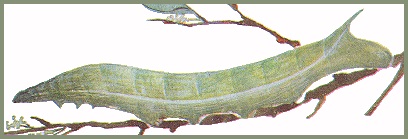

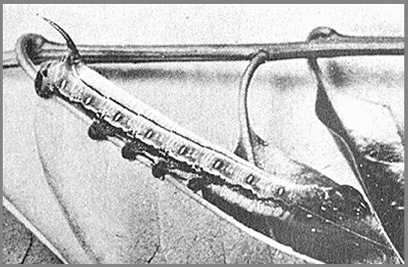
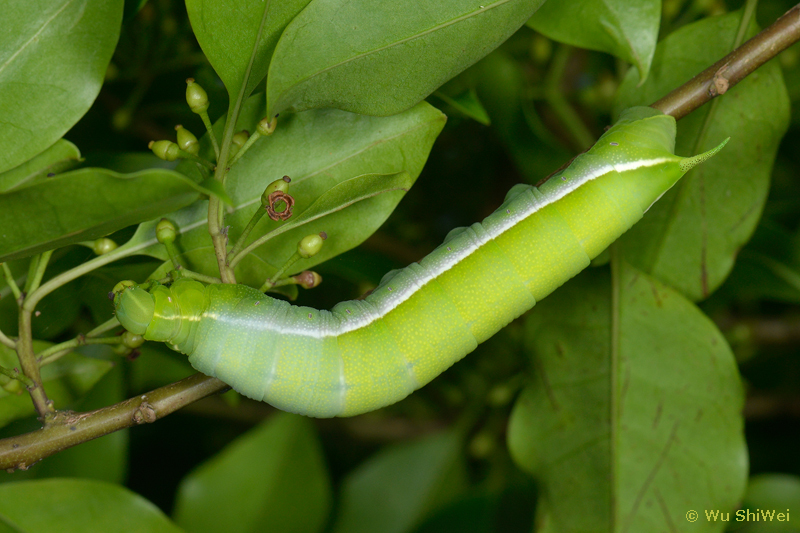
PUPA: 50-57mm; width 14 mm. In subsp. rubiginosa the predominant colour is a soiled iron-grey dorsally, dark rust-red ventrally, the bevels of segments 9 to 11 ochreous-brown. Slender in build, head broadly rounded, with a pointed process directed forwards. Eyebrows raised and prominent and with the central projection making the head appear three-pointed. Clasper-sears also prominent and with the cremaster making the anal end also three-pointed. Antenna equal to fore leg and reaching to half length of wing-case; mid-leg to about three-quarters. Segment 12 of considerably less diameter at its front margin than 11 at its hind margin, the hind margin of 11 deeply undercut, as in the case of Acosmeryx pupae. Surface rugose, with a pit at the angle formed by the eye and the base of the antenna ventrally, as in the pupae of Theretra. Legs and antennae not well expressed; costa of wing prominent; two deep pits behind the spiracle on 5 and 6. Cremaster broad at base, triangular, with a simple point (Bell & Scott, 1937).
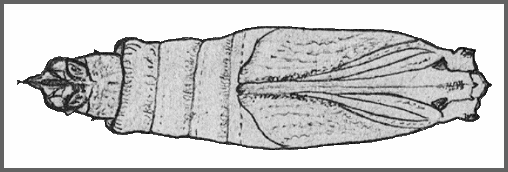

Larval hostplants. Ilex rotunda in Japan and southern China (Mell, 1922b).
Unknown.
China: Anhui (Yaoluoping, Yuexi County, 760m; Huishang); Zhejiang (Kuocang Mountain Nature Reserve; Quzhou); Yunnan (Longling, 1750m); Guizhou (Jiucailing); Jiangxi (Xipaihe, Wuyi Shan, 1500m; 50km SE Yingtan, Wuyi Shan, 1600m; Shangrao); Fujian (Xiahuang, Shaowu County, 1524m; Sanming, Youxi County, 710m; Chiyantou Shan; Nanping; Suimishi); Guangdong (Guangzhou; Lemingcun); Hong Kong; Guangxi (Maoer Shan, 1800m; Jinxiu, Dayaoshan, 880m).
Taiwan: Taipei Hsien (Fushan; Lalashan); Yilan Hsien (Datong Township, Tianmaru, 1267m); Taoyuan Hsien (near Balung (Kishida, 1982)).
From southern China to northern Taiwan and southern Japanese islands. However, the single speciman from western Yunnan, China, may be subsp. rubiginosa.
[Subsp. rubiginosa occurs from Pakistan and northwestern India (Himachal Pradesh) eastwards across northern India (Himachal Pradesh, Uttarakhand, Arunachal Pradesh, Mizoram), Nepal, Bhutan, northern Myanmar/Burma and, possibly, Yunnan, China.]
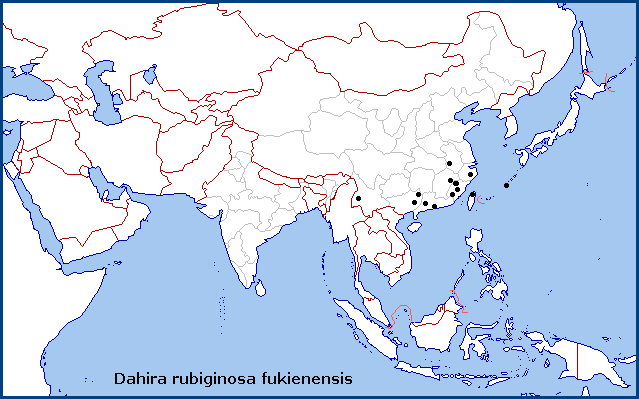
 Return to Sphingidae of the Eastern Palaearctic species list
Return to Sphingidae of the Eastern Palaearctic species list